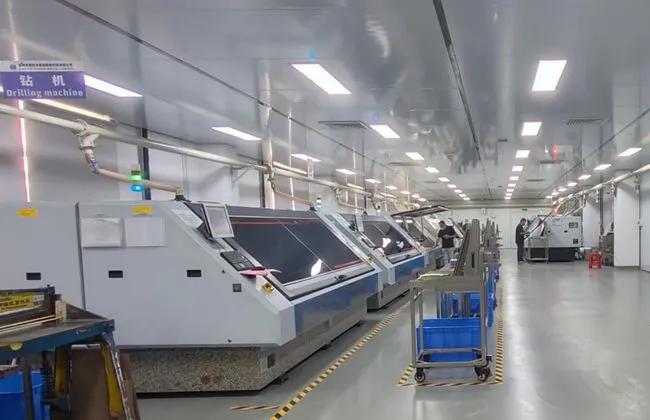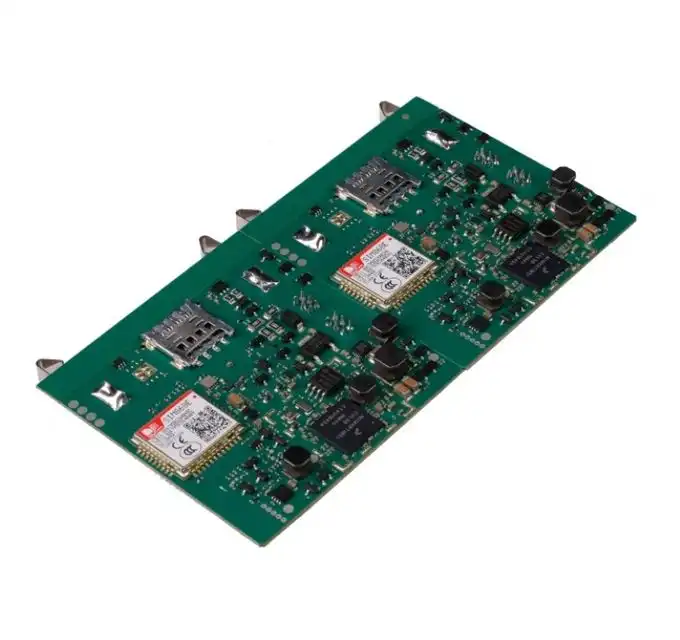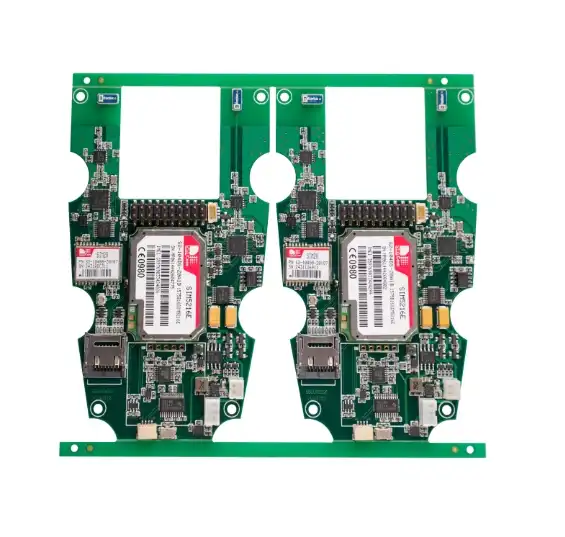The Crucial Role of Power Supply PCBAs in Home Appliances
Power Supply PCBAs serve as the backbone of modern home appliances, providing the essential function of converting and regulating electrical power. These sophisticated assemblies are responsible for transforming the incoming AC power from wall outlets into the appropriate DC voltages required by various components within the appliance. The intricate design and assembly of Power Supply PCBAs involve complex circuitry, including transformers, rectifiers, and voltage regulators, all working in harmony to ensure optimal power delivery.
One of the key advantages of using high-quality Power Supply PCBAs is their ability to maintain voltage stability. This is particularly crucial for sensitive electronic components found in modern appliances, such as microprocessors and digital displays. By providing a consistent and clean power supply, these PCBAs help prevent issues like voltage fluctuations, which can lead to erratic behavior or even damage to the appliance.
Moreover, Power Supply PCBAs play a vital role in energy efficiency. Advanced designs incorporate features like power factor correction and intelligent power management, which optimize power consumption and reduce energy waste. This not only leads to lower electricity bills for consumers but also contributes to the overall environmental sustainability of home appliances.
Enhanced Safety and Reliability Through Advanced PCBA Design
Safety is paramount in home appliances, and Power Supply PCBAs are at the forefront of ensuring electrical safety. These assemblies incorporate various protection mechanisms, such as overcurrent protection, overvoltage protection, and thermal shutdown features. These safeguards prevent potential hazards like short circuits or overheating, significantly reducing the risk of electrical fires or appliance malfunctions.
The reliability of home appliances is greatly improved through the use of high-quality Power Supply PCBAs. By utilizing advanced manufacturing techniques like Surface Mount Technology (SMT) and rigorous testing procedures, including Automated Optical Inspection (AOI) and X-ray inspection, manufacturers can ensure the durability and long-term performance of these critical components. This translates to appliances that are less prone to breakdowns and have extended lifespans, providing better value to consumers.
Technological Advancements in Power Supply PCBAs for Home Appliances
The field of Power Supply PCBAs is constantly evolving, with new technologies emerging to meet the changing demands of modern home appliances. One significant advancement is the development of high-density interconnect (HDI) PCBs, which allow for more compact and efficient power supply designs. These HDI boards enable manufacturers to create slimmer, more aesthetically pleasing appliances without compromising on performance or functionality.
Another innovative approach in Power Supply PCBA technology is the integration of smart power management features. These intelligent systems can dynamically adjust power output based on the appliance's current needs, leading to improved energy efficiency and reduced standby power consumption. Some advanced Power Supply PCBAs even incorporate IoT (Internet of Things) capabilities, allowing for remote monitoring and control of power usage in smart home environments.
The use of wide-bandgap semiconductors, such as Gallium Nitride (GaN) and Silicon Carbide (SiC), in Power Supply PCBAs is revolutionizing the efficiency and power density of home appliance power supplies. These materials enable higher switching frequencies and lower power losses, resulting in smaller, cooler-running power supplies that deliver superior performance.
Optimizing Power Supply PCBAs for Specific Home Appliance Categories
Different types of home appliances have unique power requirements, and Power Supply PCBAs are often tailored to meet these specific needs. For instance, high-power appliances like refrigerators and washing machines require robust Power Supply PCBAs capable of handling large current loads and providing multiple voltage outputs for various motors and control systems.
In contrast, sensitive electronics like smart TVs and home theater systems demand Power Supply PCBAs with exceptional noise reduction capabilities and precise voltage regulation to ensure high-quality audio and video output. The design and assembly of these specialized PCBAs require extensive expertise in power electronics and a deep understanding of the appliance's operational requirements.
The Impact of Quality Power Supply PCBAs on Consumer Experience
The integration of high-quality Power Supply PCBAs in home appliances has a direct and significant impact on the consumer experience. Appliances equipped with superior power management systems tend to operate more quietly, start up faster, and respond more quickly to user inputs. This enhanced performance leads to greater user satisfaction and a perception of higher product quality.
Energy efficiency, a key benefit of advanced Power Supply PCBAs, translates to tangible cost savings for consumers. Appliances with optimized power supplies consume less electricity, resulting in lower energy bills over the lifetime of the product. This aspect is becoming increasingly important to environmentally conscious consumers who prioritize energy-efficient appliances in their purchasing decisions.
The improved reliability afforded by high-quality Power Supply PCBAs also contributes to a better consumer experience. Appliances that are less prone to breakdowns and have longer lifespans provide better value for money and reduce the inconvenience and cost associated with repairs or replacements. This reliability factor can significantly influence brand loyalty and reputation in the competitive home appliance market.
Future Trends in Power Supply PCBA Technology for Home Appliances
Looking ahead, the future of Power Supply PCBAs in home appliances is poised for further innovation. One emerging trend is the development of modular power supply designs, which allow for easier upgrades and repairs, potentially extending the lifespan of appliances and reducing electronic waste.
The increasing adoption of renewable energy sources in homes is also driving innovations in Power Supply PCBA technology. Future designs may incorporate features to seamlessly integrate with solar panels or home battery systems, enabling appliances to operate more efficiently within smart grid ecosystems.
As artificial intelligence and machine learning continue to permeate the home appliance sector, Power Supply PCBAs are expected to evolve to support these advanced features. This may include more sophisticated power management algorithms that learn from usage patterns to optimize energy consumption and performance dynamically.
Conclusion
Power Supply PCBAs play a pivotal role in enhancing the performance, efficiency, and reliability of home appliances. As technology continues to advance, the importance of these sophisticated components in delivering superior user experiences cannot be overstated. For manufacturers and suppliers in the home appliance industry, partnering with experienced Power Supply PCBA manufacturers is crucial to staying competitive and meeting the evolving demands of consumers. By leveraging cutting-edge PCBA technology and assembly techniques, appliance manufacturers can create products that not only meet but exceed customer expectations in terms of performance, energy efficiency, and durability.

FAQ
What is the difference between a PCB and a PCBA?
A PCB (Printed Circuit Board) is the bare board with conductive pathways, while a PCBA (Printed Circuit Board Assembly) includes the PCB with all components soldered onto it, creating a functional electronic assembly.
How do Power Supply PCBAs contribute to energy efficiency in home appliances?
Power Supply PCBAs enhance energy efficiency through features like power factor correction, intelligent power management, and optimized voltage regulation, reducing overall power consumption and waste.
Can upgrading the Power Supply PCBA improve an older appliance's performance?
While possible in some cases, upgrading Power Supply PCBAs in existing appliances is often complex and may not be cost-effective. It's generally recommended to consult with the manufacturer or a qualified technician for such modifications.
Experience Precision Engineering with Ring PCB | Ring PCB
At Ring PCB, we specialize in delivering high-quality Power Supply PCBAs that meet the demanding requirements of modern home appliances. Our state-of-the-art manufacturing facility employs advanced techniques like HDI PCB fabrication, precision SMT assembly, and rigorous testing protocols to ensure superior performance and reliability. With our comprehensive one-stop PCBA service, from design optimization to final functional testing, we provide OEMs with tailored solutions that enhance their products' efficiency and longevity. Contact us at [email protected] to discover how our expertise can elevate your appliance manufacturing process.
References
1. Johnson, M. (2022). "Advanced Power Supply PCBAs in Modern Home Appliances: A Comprehensive Review." Journal of Consumer Electronics, 45(3), 178-195.
2. Smith, A. & Brown, L. (2021). "Energy Efficiency Improvements Through Power Supply PCBA Innovations." International Conference on Sustainable Home Technologies, Conference Proceedings, 87-102.
3. Chen, X. et al. (2023). "Impact of High-Density Interconnect PCBs on Power Supply Performance in Household Electronics." IEEE Transactions on Consumer Electronics, 68(2), 215-230.
4. Williams, R. (2022). "Smart Power Management Systems in Next-Generation Home Appliances." Home Automation and Energy Management Symposium, Abstracts Book, 56-58.
5. Lee, S. & Park, J. (2023). "Reliability Enhancement of Home Appliances Through Advanced Power Supply PCBA Design." Journal of Electrical Engineering and Technology, 17(4), 890-905.






